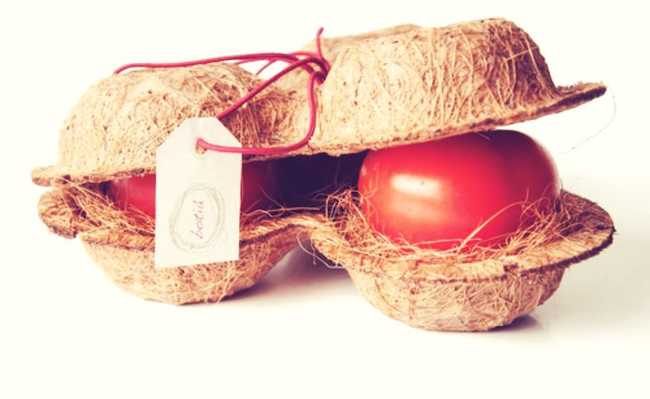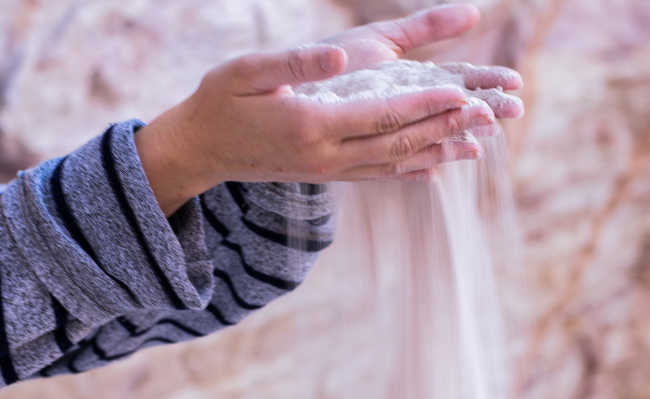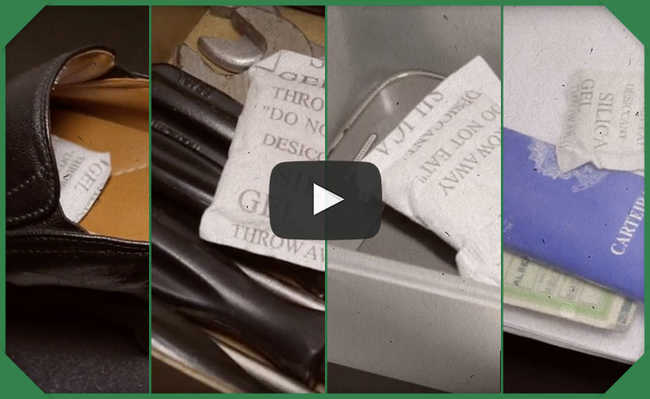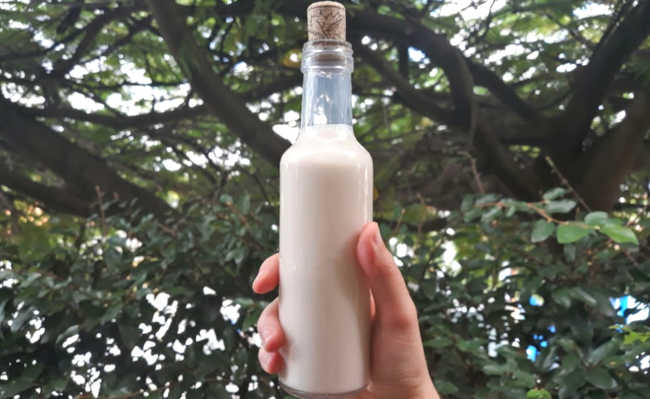Cistern: understand how it works and its benefits
Using a cistern is a simple and safe way to store reuse water

A cistern is a deposit or reservoir that serves to capture, store and conserve water, which may be drinking water, rainwater or reuse water. There are different types of cisterns. The masonry cistern model needs to be buried in the ground and requires engineering work. There are also compact cistern options, used by houses and buildings with less space or that are not interested in renovating. Whatever the available area, the cistern is a tool that allows water savings of up to 50% on the bill, as it makes it possible to use both rainwater and gray water, which is a type of reuse water. from baths, washing machines and bathroom sinks.
Learn more about rainwater harvesting and reuse water:
- Rainwater harvesting: learn about the advantages and necessary precautions for using the cistern
- Practical, beautiful and economical rainwater catchment system
- Gray water: how to use reuse water
- Reuse water and use of rainwater: what are the differences?
- The colors of effluents: understand the differences between gray water and black water
Saving water is a very important habit, as it helps to prevent the increasingly frequent water crises and also saves natural resources. By using a cistern to collect rainwater, it is possible to clean the yard, water plants or flush without using the precise resource that is drinking water. Indirectly, through the cistern, you relieve the pressure on the springs, as it helps to reduce the demand for the resources needed for water treatment.
Rainwater harvesting, however, needs to be done safely. Storage places must be fenced to avoid contamination and proliferation of dengue mosquitoes and other insects. For this, there is the cistern. Both masonry and fiber or plastic models guarantee comfort and practicality when saving money. Because it requires works, the cost of the masonry cistern ends up being higher. Those who do not want to worry about a renovation can reuse rainwater and domestic use through plastic cisterns.
There are water reuse kit options that allow you to use water even in small spaces. This is the case of mini-cistern models from Caselogic, gives Tecnotri and of the waterbox, sold in the eCycle Store. Using a mini-cistern is a very effective and easy to install way for houses, apartments and condominiums. They guarantee the safety and comfort of a larger cistern, without taking up a lot of space, in addition to not requiring renovations. Your pocket and the environment are grateful.
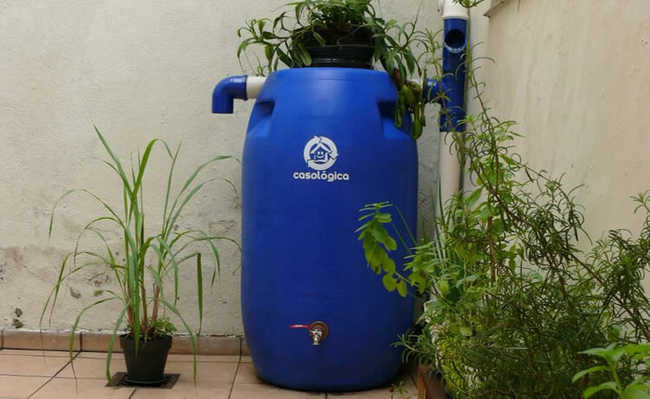
Caselogic image/disclosure
As it is rain-fed, the water collected by the cistern is not considered to be potable, that is, it is not suitable for human consumption. Rainwater can contain dust, soot, sulfate, ammonium and nitrate. However, much of the water we use in our daily lives does not need to be potable. In other words, rainwater can still be used for many domestic activities, such as cleaning cars, machines, floors, backyards, sidewalks, irrigating plants, gardens and flushing toilets.
The same goes for some tasks that use a lot of water, such as washing clothes or taking a shower. The leftover water can be collected and reused in many of these tasks, paying attention only to the chemicals that they eventually contain and that can harm plants or stain surfaces, for example. In the article "Gray water: how to use reuse water", we prepared a complete manual on how to use gray water.
In the case of a smaller cistern, it can be directly coupled to the gutters to collect water. Rainwater is taken through the gutters to a filter, where impurities, such as leaves or pieces of branches, are removed mechanically. In addition, some cistern models have a first rainwater separator (which can contain dirt from the roof). It's also good to look for a cistern with a tap at the bottom to make it easier to use and clean later. Read more in: "How to clean the domestic cistern?".
How does a cistern work?
The image below illustrates how a smaller cistern works, but the idea is more or less the same for larger models.
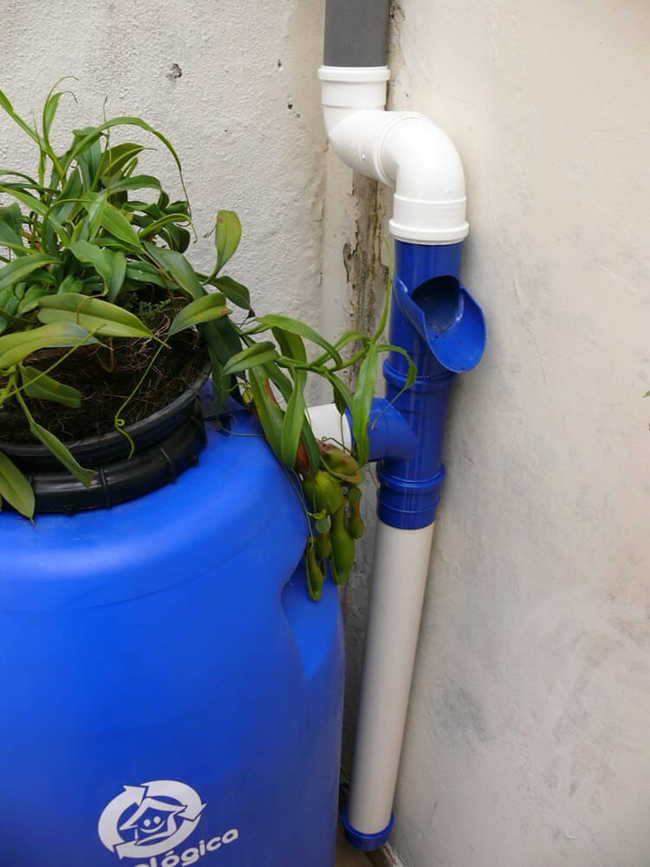
Caselogic image/disclosure
When choosing your cistern, it is also interesting to choose models that can be coupled, if you want or need to increase its storage capacity. Be careful with the weight of the cistern and remember that each liter of water weighs a kilogram, so the place where you are going to place your cistern must support its full weight.
To ensure safety and avoid contamination by disease vectors, it is ideal that all entrances and exits of the cistern are protected by mosquito nets, keeping the Aedes Aegypti and other insects.
In addition to the models sold, you can also make your own cistern. This will only take a little time and willingness. The materials are easily found in building supply stores. Check out the complete step by step in the article: "How to make a residential cistern".
Saving water is an environmentally friendly activity and reduces costs. By reusing rainwater you help preserve the natural water cycle. It feeds groundwater when irrigating gardens and minimizes the flow of high volumes of water into collecting networks during heavy rains.




